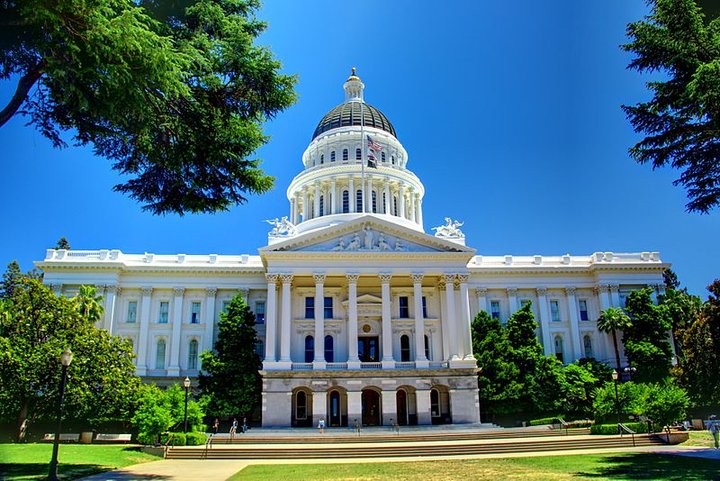
California State Capitol. Image: Wikimedia.
###
Gov. Gavin Newsom today reminded people that California is very much still at risk from coronavirus, even though the slowly reopening economy might prompt some to think otherwise.
Newsom, who at times found himself defending his stay-at-home order, in his latest briefing said people facing personal financial challenges and other health concerns can’t be expected to stay home much longer.
“When you have now over 5.5 million people on unemployment just since March 12, when you have people that don’t have access to basic preventative health care, when you have people that are struggling and suffering with severe mental health and brain health issues, when people are not attending to their physical and emotional needs, those social determinants of health also must be considered,” he said.
Newsom backed the state’s decision to continue reopening business sectors by providing a hint of optimism: Hospitalizations and ICU admissions have remained mostly stable in the last 14 days, even after May holidays and protests that led to a rise in group gatherings.
The state has had multiple record-breaking days for numbers of new coronavirus cases in the past month, but Newsom and others have said that’s primarily due to increased testing, and that the rate of positive cases is trending downward.
The rate of positive tests has decreased from a peak of 40.8% in early April to 4.5% now, according to the state’s data. The state has increased testing in that time, from around 10,000 per day in early April to more than 65,000 people each day this past weekend. Because of the initial lag in the availability of tests, previously, only people with serious symptoms were tested.
Hospitalization rates, another critical component in assessing the state’s ability to reopen, have been fairly stable: In the last 14 days the state has recorded a 1.5% increase in the number of hospitalizations and a 0.2% decrease in ICU admissions, according to the California Department of Public Health.
That said, Newsom emphasized the importance of proceeding with caution.
“There is perhaps some amnesia, distraction, understandable frustration, angst, cabin fever, that has entered the national discourse,” he said. “It’s also incumbent upon us as individuals to be smart, to wear face coverings and to physically distance.”
The state has allowed bars, gyms, hotels, summer camps and bowling alleys to reopen as of last week, as long as local health officials authorize it. Churches with limited capacity have also reopened.
Some local public health officials have spoken against the state’s quick reopening, warning that allowing large gatherings of people is a serious risk.
“The pace at which the state has made these modifications is concerning to me,” Dr. Sara Cody, Santa Clara’s public health director, said last month.
When asked about local leaders’ concerns, Newsom said that if a local health officer chooses not to reopen, they don’t have to. “Guidelines don’t mean go,” he said. “We do not prescribe when, we prescribe how.”
Newsom and his health officers have said that because of California’s size, one strategy does not fit all counties. It is also why each county is responsible for providing updates on cases, hospitalizations, testing and contact tracing.
Based on that information, the state makes decisions on who to approve for further reopening.
Dr. Mark Ghaly, health and human services secretary, said the state is currently monitoring 13 counties. Nine of those counties are on the state’s watch list because they’ve had at least three days of increased transmission or uptick in hospitalizations.
“For one reason or another, we have a little bit of concern about the data” in those counties, Ghaly said. Closely watching these counties, he said, allows the state to step in when needed, whether that’s to provide staff, ventilators or helping move patients to other counties.
###
CALmatters.org is a nonprofit, nonpartisan media venture explaining California policies and politics.
CLICK TO MANAGE